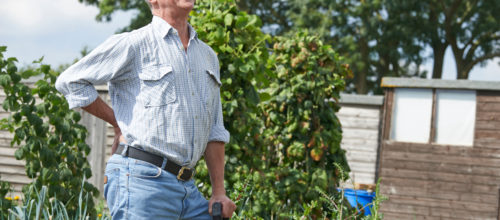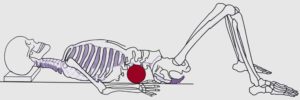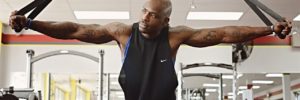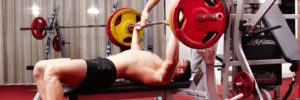
30 DAYS OF LOW BACK PAIN: DAYS 11-20
This is Part II of my latest series dealing with anything and everything low back pain: How to prevent back pain, develop a superhuman low back and make your low back feel less like a pain in the ass. If you missed Part I, I’d suggest starting there before going through Part II.
Day 11 – 2 Spine Sparing Strategies for Standing
Did you know that crossing your arms in front of your body when standing is a poor spine sparing strategy?
Or.
That sneezing and coughing with your head straight can increase pressure on the low back?
Thanks to Dr. McGill’s research, we know that there are better ways to stand, cough and sneeze.
Placing your arms behind your low back and crossing them when standing spares the low back.
And.
Coughing or sneezing with your head tilted upwards reduces the amount of force on the low back.
2 simple tips that can go a long way in sparing the low back!
https://www.instagram.com/p/B2zcAZPn04Q/
Day 12 – Things You Should Know About the McKenzie Prone Press-up and Disc Herniation’s
The McKenzie Prone Press-up is a common exercise that people perform for low back pain relief.
While, people do get relief from the McKenzie prone press-up, others get worse.
It’s an exercise that people need to be careful with as context matters.
Scannell & McGill (2009) found that repeated McKenzie extensions only work in discs that have 70% of their disc height or more remaining. A loss of disc height of less than 70% may cause the facet joints to kick-in earlier and limit the amount of extension needed for reversing the disc nucleus.
Also, disc shape seems to play a role in the reversal of a disc herniation. Limacon (kidney-shaped) discs seem to respond well to the McKenzie extensions, but oval discs don’t (Yates, J. P., Giangregorio, L., & McGill, 2010).
From the research provided on McKenzie prone-up, I’d argue it’s like playing roulette. You don’t know if it’s going to help or not unless you try it, or perhaps have an MRI scan to examine the anatomy of the disc. My suggestion is to proceed with caution if you’re thinking of performing this exercise and visit a medical professional familiar with Robin McKenzie’s Mechanical Diagnosis and Therapy (MDT) and Dr. McGill’s research.
https://www.instagram.com/p/B218p4tnCmE/
Day 13 – Ab Rollouts & Low Back Pain
A common mistake that people make when it comes to the ab rollout is that they fall into lumbar extension.
A lack of awareness for proper core control tends to be the culprit.
Getting people to engage their core and activate their glutes tends to clean up the lumbar extension fault.
https://www.instagram.com/p/B24gba_HgCO/
Day 14 – Correcting a Common Flaw on a Hip Flexor Mobility Drill
Improving hip mobility is important for folks with a history of low back pain.
If the hips are stiff, the low back will compensate for lack of motion — resulting in more stress on the low back.
When it comes to hip mobility drills, people often butcher them by creating motion at places they shouldn’t, such as the low back.
Similar to the ab rollouts mistake, people may fall into lumbar extension when trying to get deep into a stretch.
Rather.
People need to focus on engaging their core and glutes to get a proper stretch without low back compensation.
https://www.instagram.com/p/B266xjNl9he/
Day 15 – Cat-Camel Exercise
The Cat-Camel exercise is a popular exercise that you may see performed in a yoga studio or a low back rehab setting.
Often, people don’t know the purpose of this exercise or understand the intended benefits, which is why this exercise may get a bad reputation sometimes.
The Cat-Camel exercise is designed to reduce friction that may exist in the low back, and it tends to serve as a nice warm-up exercise.
People should focus on 6-8 repetitions while moving the spine through flexion and extension.
https://www.instagram.com/p/B291UlgnD_v/
Day 16 – Tips to Spare the Low Back when Lifting Heavy & Light Objects
When lifting a heavy or light object, a neutral spine should always be maintained.
With a heavy object, a proper brace needs to be maintained and tailored to the weight lifted. But with a light object, one can adjust their lifting strategy and assume a golfer’s lift that helps spare the spine.
Both lifting strategies will go a long way in preventing a back injury from developing
https://www.instagram.com/p/B3AcYq9nxY8/
Day 17 – The Importance of a Neutral Spine & How Low Back Injuries May Develop
Lifting an object with the spine bent or twisted is not a good long-term strategy for the health of your spine.
Anytime you lift with your spine flexed, extended, or twisted, you are putting yourself at a high risk of F*cking something up.
Always be aware of lifting posture and be sure to practice proper bending strategies for long-term back health!
https://www.instagram.com/p/B3DtY2unJjE/
Day 18 – Bulgarian Split Squat & Low Back Pain
The Bulgarian split squat is an exercise that challenges hip mobility, lower body strength and balance.
It’s not an easy exercise to perform and requires a certain degree of hip mobility. People with poor hip mobility (stiff/short rectus femoris), tend to have a difficult time getting into a proper position without compensating at the low back.
Often, what you’ll see is that when people with poor hip mobility set-up for the Bulgarian split-squat, they compensate by going into lumbar extension — not a good long-term strategy for the health of the facet joints.
A few considerations for working around this compensation:
- Work on hip mobility through self-massage techniques and hip flexor mobility drills.
- Reduce the elevation of the rear foot. The higher the rear foot is, the more hip mobility required.
https://www.instagram.com/p/B3FY54hnHpD/
Day 19 – What is an Ideal Sitting Posture?
To popular belief, many people think that sitting with an upright posture tends to be the “best” sitting posture.
Well.
I’m here to tell you that this is not true.
And that there is no “best” single sitting posture.
The best sitting posture is the one that allows a person to sit pain-free.
https://www.instagram.com/p/B3H6rCjH24g/
Day 20 – Common Squat Error – Butt Wink
Butt wink is a common squat error that occurs when the low back rounds during a deep squat attempt.
While unloaded, this probably isn’t a problem. But if we put a barbell on a person’s back and have them squat deep repeatedly, we could create a disc herniation or perhaps trigger flexion based symptoms.
Not something we want.
The simple solution to avoid butt wink is to squat only to were the low back stays in a neutral position.
Not everyone as the genetic hip structure to squat deep, and unless you’re involved competitive Olympic lifting, powerlifting, or Crossfit, your squat depth is not going to be a concern.
You’re better off just staying in a safe squat range if you’d like to spare your low back over the long-term
https://www.instagram.com/p/B3LWSg-HgHG/
References
1. Scannell, J. P., & McGill, S. M. (2009). Disc prolapse: Evidence of reversal with repeated extension. Spine, 34(4), 344-350.
2. Yates, J. P., Giangregorio, L., & McGill, S. M. (2010). The influence of intervertebral disc shape on the pathway of posterior/posterolateral partial herniation. Spine, 35(7), 734-739.
Thumbnail Image Licensed from “Highwaystarz-Photography/canva.com”












